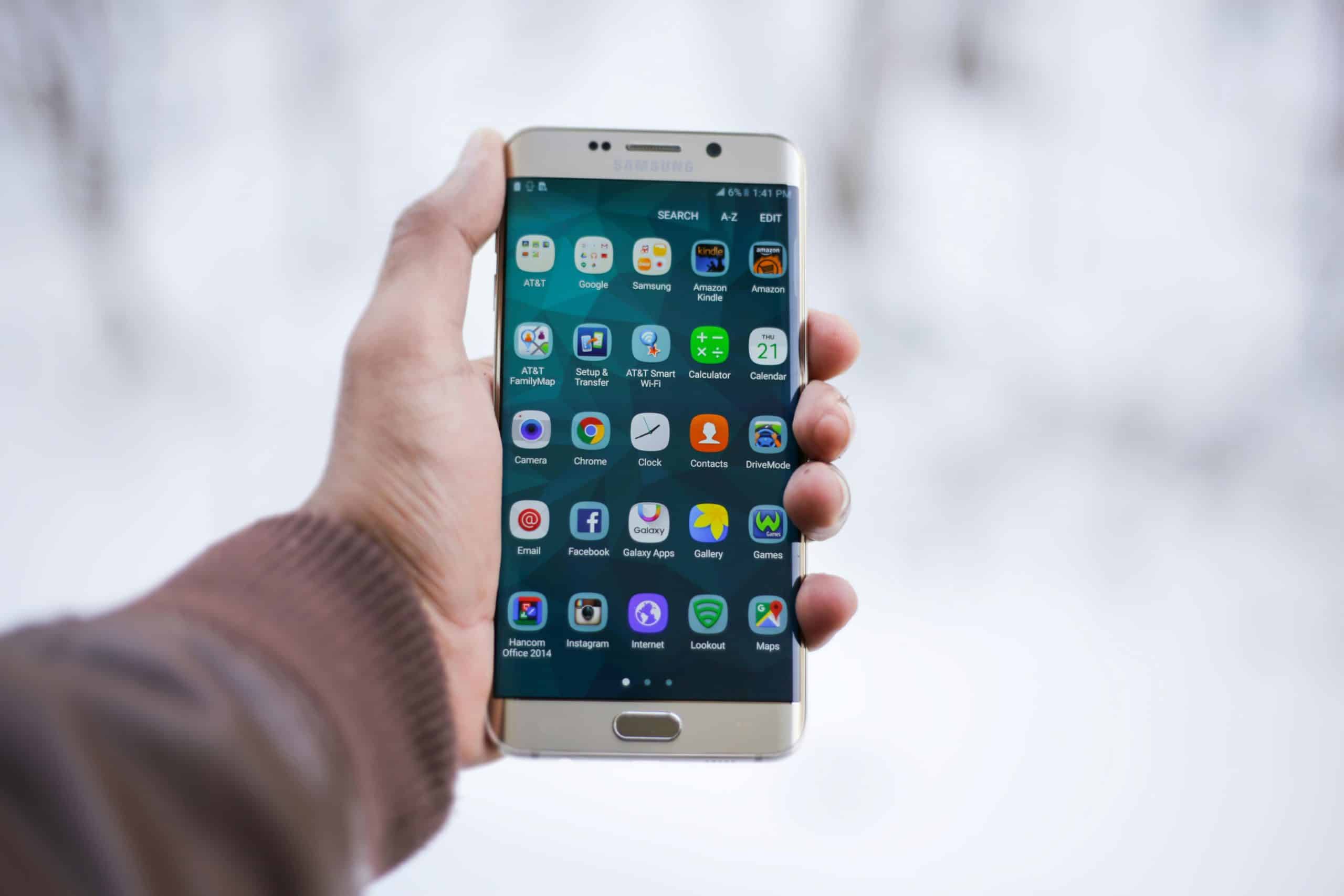What Are the Best Practices for Cleaning and Maintaining Your Smartphone's Screen?

In today's digital age, our mobile phones are indispensable companions. We rely on our smartphones for everything from communication to entertainment and even work. Given the frequency with which we use these devices, ensuring their cleanliness and maintenance is crucial. This article delves into the best practices for cleaning and maintaining your smartphone's screen to keep it in pristine condition.
The Importance of Cleaning Your Smartphone Screen
Let's face it—our smartphones go everywhere with us. Whether we're commuting, eating, or relaxing, our phones are always within arm's reach. Unfortunately, this constant use means they can quickly become a breeding ground for germs and grime. Regularly cleaning your smartphone screen isn't just about appearances; it's also about hygiene and extending the life of your device.
Lire également : What Are the Methods to Reduce Lag During Online Gaming on Smartphones?
The Hygiene Factor
Your phone screen can harbor more bacteria than a toilet seat. Considering how often we touch our faces and other surfaces after handling our phones, keeping them clean is essential for our health. Using a microfiber cloth to gently wipe down the screen can remove most of the germs and dirt.
Enhancing Screen Longevity
A dirty screen can impact your phone's functionality. Dust and grime can get into the crevices, causing scratches and potentially affecting the touch screen's sensitivity. Regular cleaning helps maintain the screen's responsiveness and prevents long-term damage.
A lire également : How to Use Your Smartwatch for Tracking Cycling Workouts?
Essential Tools for Cleaning Your Smartphone Screen
Before diving into the cleaning process, it's essential to gather the right tools. Using the wrong materials can do more harm than good. Here’s what you’ll need to clean your phone screen effectively and safely.
Microfiber Cloth
A microfiber cloth is your best friend when it comes to cleaning your smartphone screen. Unlike other materials, microfiber is soft and won't scratch the surface. It efficiently picks up dust and grime without the need for harsh chemicals.
Distilled Water and Dish Soap
For a deeper clean, distilled water mixed with a small amount of dish soap is effective. Tap water can contain minerals that leave behind streaks or even damage the screen. Distilled water, on the other hand, is free of these impurities.
Isopropyl Alcohol (70% or Lower)
If you need to disinfect your phone, use isopropyl alcohol, but ensure it’s 70% or lower. Higher concentrations can damage the screen’s protective coating. This solution is excellent for killing germs without harming your phone.
Phone Cleaning Kits
For those who prefer convenience, phone cleaning kits are available. These kits often include cleaning solutions, microfiber cloths, and other tools designed specifically for mobile phones.
Step-by-Step Guide to Cleaning Your Phone Screen
Now that you have the right tools, it's time to proceed with the cleaning process. Follow these steps to ensure your phone screen is spotless and safe from damage.
Step 1: Power Down Your Device
Before cleaning, always turn off your phone. This not only protects the device but also allows you to see the dirt and smudges more clearly.
Step 2: Remove the Phone Case
Take off your phone case to access the entire surface of your device. Clean the case separately using appropriate methods, as a dirty case can transfer grime back onto your freshly cleaned phone.
Step 3: Initial Wipe with Microfiber Cloth
Use a dry microfiber cloth to wipe the screen gently. This initial wipe removes loose dust and particles, preventing them from scratching the screen during the deeper cleaning process.
Step 4: Prepare Cleaning Solution
Mix distilled water with a small amount of dish soap. Dampen a corner of the microfiber cloth with this solution. Avoid soaking the cloth, as excess moisture can seep into the phone and cause damage.
Step 5: Clean the Screen
Gently wipe the screen with the dampened cloth, using small circular motions. This helps lift away oils and grime without scratching the surface. If you're using isopropyl alcohol, apply it sparingly to another section of the cloth and wipe the screen.
Step 6: Dry the Screen
After cleaning, use a dry part of the microfiber cloth to wipe the screen again. This removes any remaining moisture and leaves your phone looking polished.
Step 7: Clean the Phone Case
Don’t forget to clean your phone case. Depending on its material, you can use the same solution or a specific cleaner designed for phone cases. Make sure it's completely dry before putting it back on your phone.
Maintaining Your Smartphone Screen Over Time
Cleaning your phone screen regularly is crucial, but maintenance practices can further extend its lifespan. Here are some tips to keep your phone screen in top condition.
Avoid Excessive Pressure
When using your phone, avoid pressing too hard on the screen. Excessive pressure can damage the touch sensors and lead to cracks or other issues. Use gentle touches and swipes to interact with your device.
Use a Screen Protector
A screen protector adds an extra layer of protection to your phone. It guards against scratches, minor impacts, and even smudges. Choose a high-quality screen protector that fits your phone model perfectly.
Keep Away from Harsh Environments
Avoid exposing your phone to extreme temperatures, moisture, and direct sunlight for extended periods. These conditions can damage the screen and internal components.
Regularly Clean Your Phone Case
A dirty phone case can transfer grime back to your screen. Make it a habit to clean your phone case regularly, especially the edges and corners where dirt can accumulate.
Charge Properly
Improper charging habits can affect your phone's battery and, subsequently, its overall performance. Use the charger that came with your phone, and avoid overcharging. Keeping your device in good working order ensures that all components, including the screen, function optimally.
Tips to Avoid Common Cleaning Mistakes
Even with the best intentions, it's easy to make mistakes that can damage your phone screen. Here are some common pitfalls to avoid.
Using Abrasive Materials
Never use paper towels, tissues, or abrasive cloths to clean your phone screen. These materials can scratch the surface and leave behind fibers.
Spraying Liquid Directly on the Screen
Never spray cleaning solutions directly on your phone screen. Always apply the solution to a cloth first to prevent excess moisture from penetrating the device and causing damage.
Ignoring Manufacturer Guidelines
Always check your phone's manufacturer guidelines before cleaning. Different phone models may have specific instructions or warnings about certain cleaning products.
Overlooking the Ports
While cleaning your screen, don’t forget to check and clean the ports. Dust and debris can accumulate in the charging port, headphone jack, and speaker holes, affecting your phone's functionality. Use a dry, soft-bristled brush to clean these areas gently.
Forgetting Regular Maintenance
Regular maintenance is key to keeping your phone screen in good condition. Don’t wait until the screen is grimy to clean it. Schedule regular cleaning sessions to prevent buildup and maintain hygiene.
In conclusion, maintaining and cleaning your smartphone screen is essential for both hygiene and the longevity of your device. By using the right tools, following a thorough cleaning process, and adopting good maintenance habits, you can keep your phone screen in excellent condition. Remember to handle your phone gently, use protective accessories like screen protectors, and clean your phone case regularly to prevent grime transfer. By integrating these practices into your routine, you ensure your smartphone remains a reliable and hygienic companion in your daily life.
